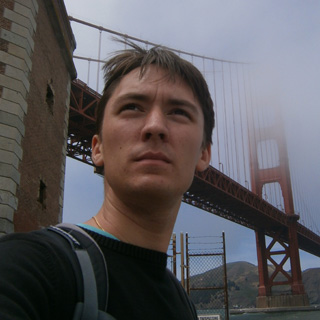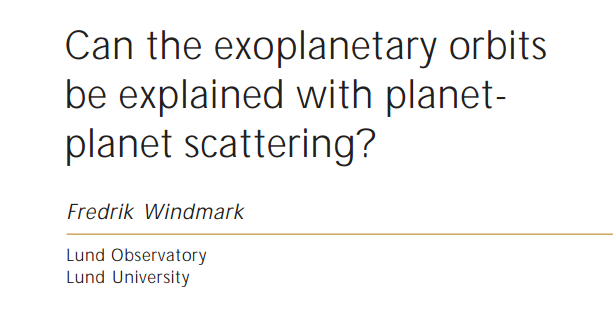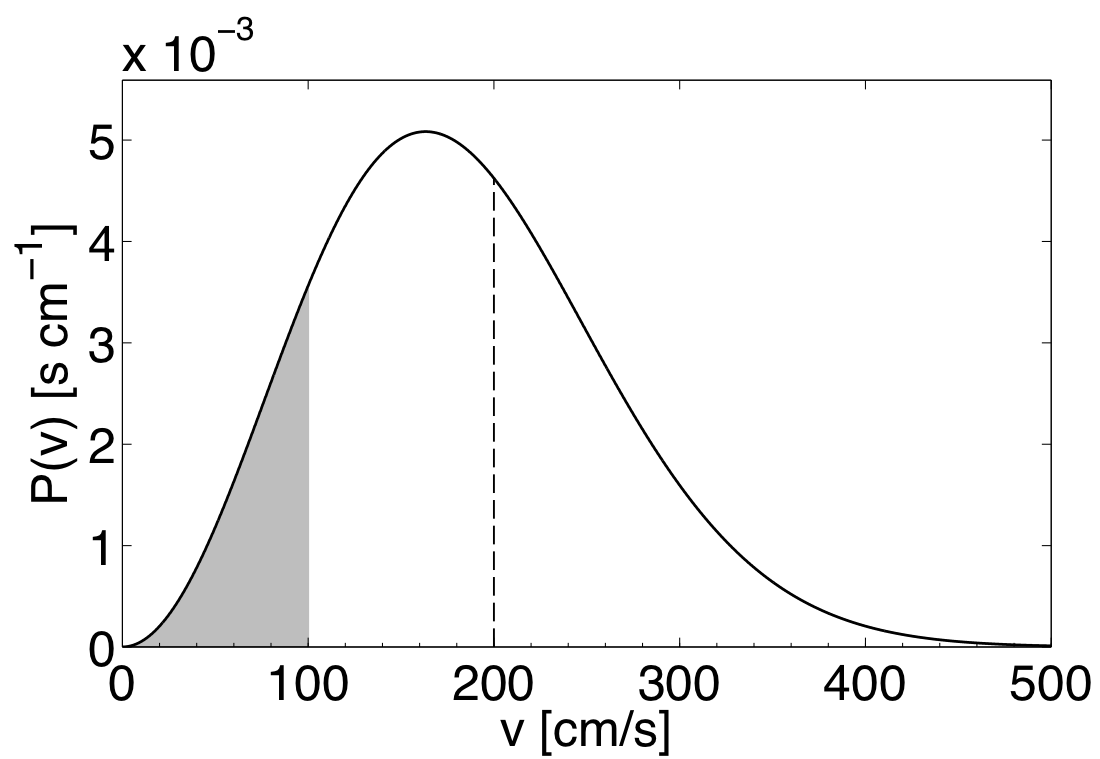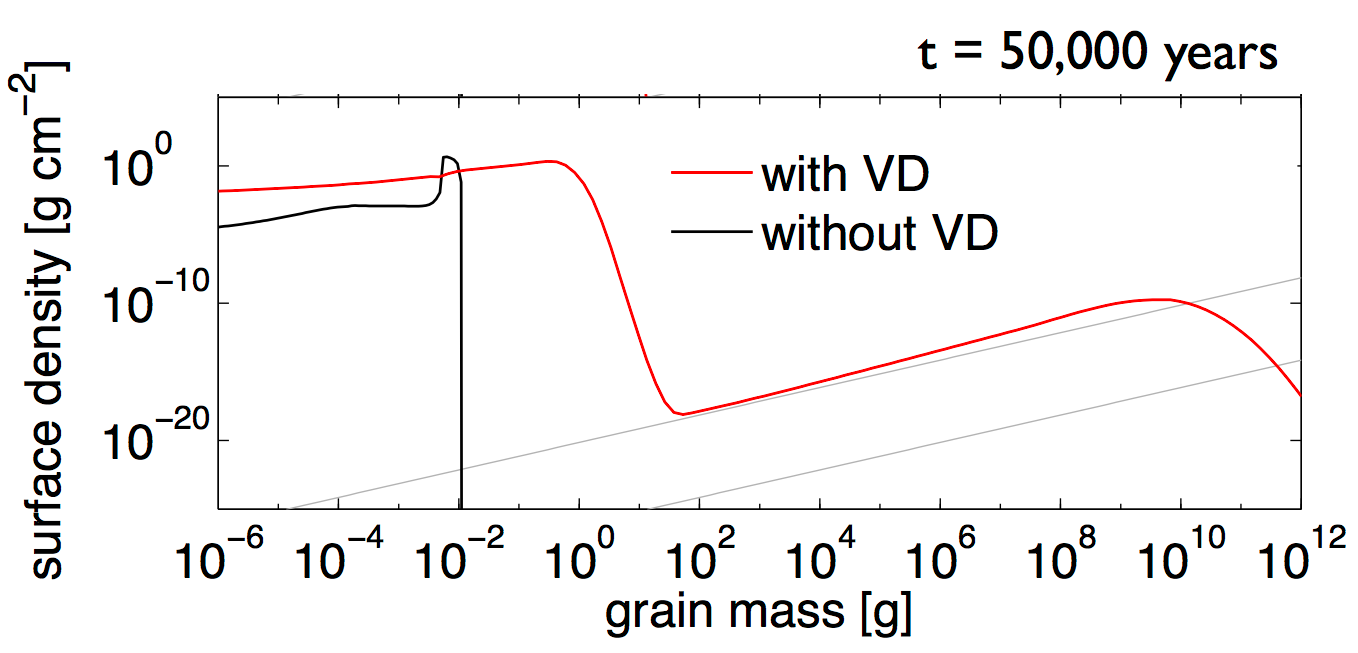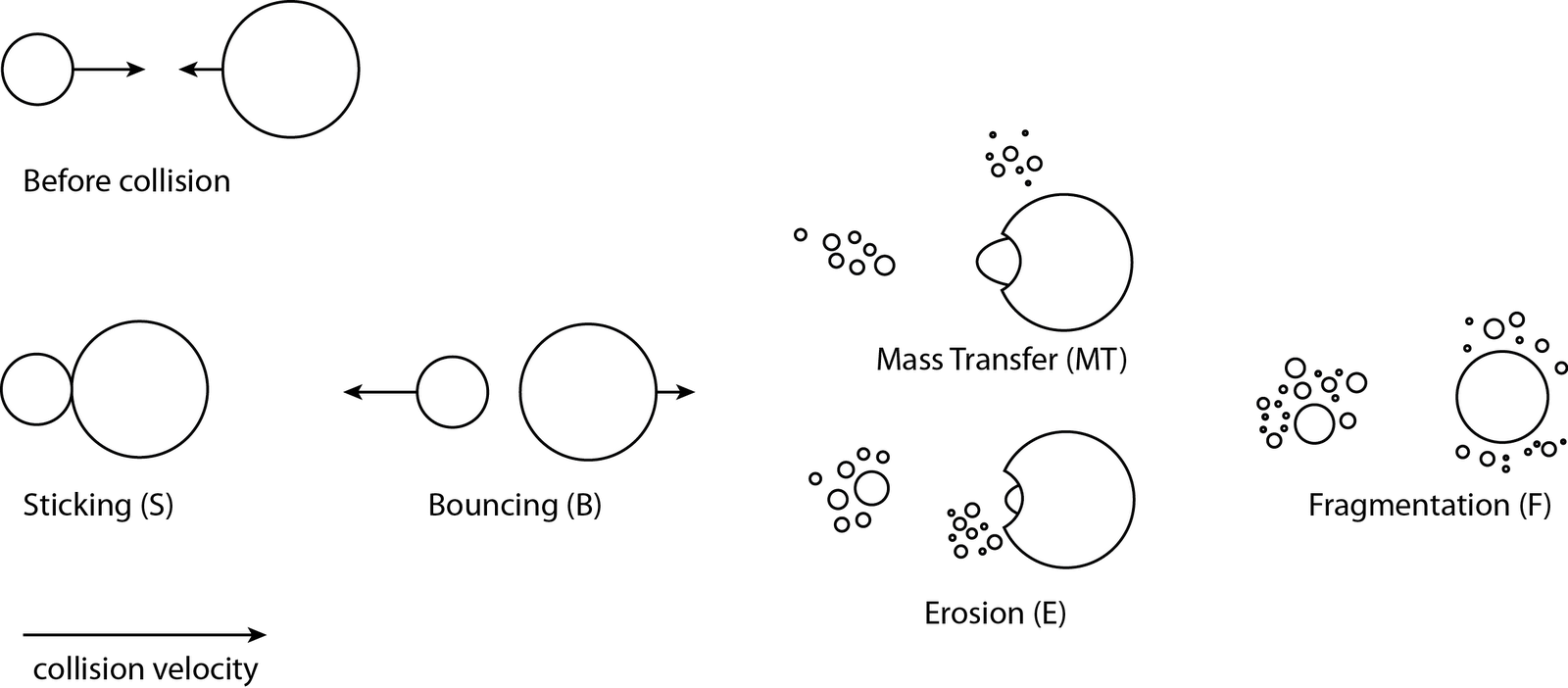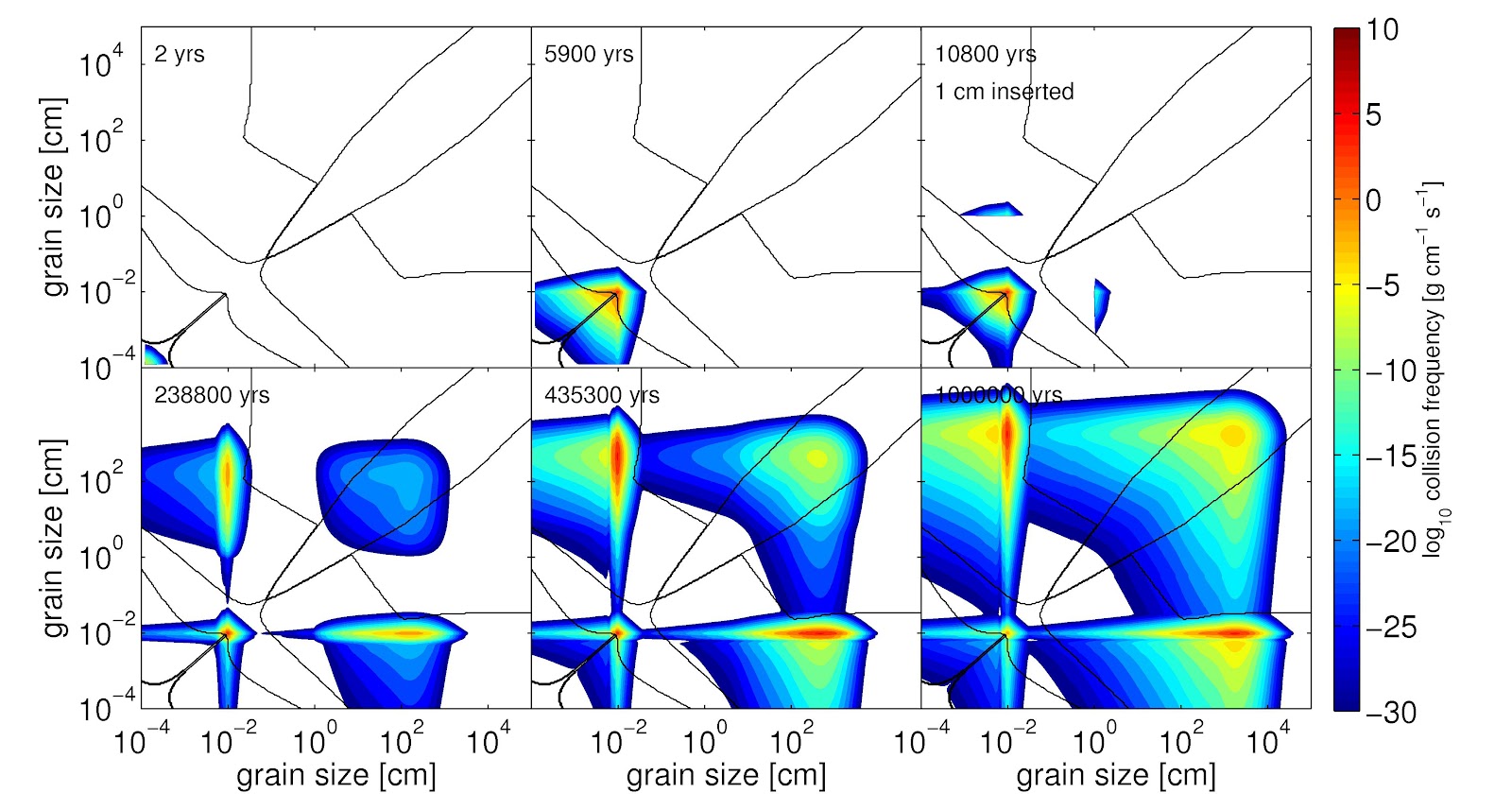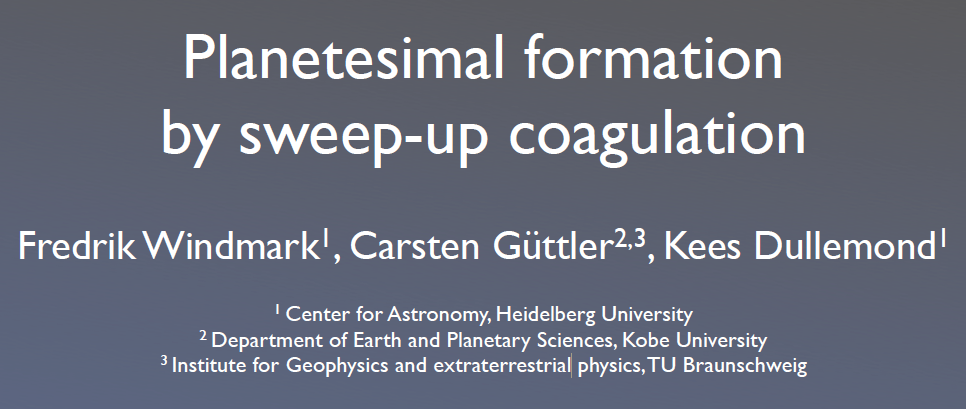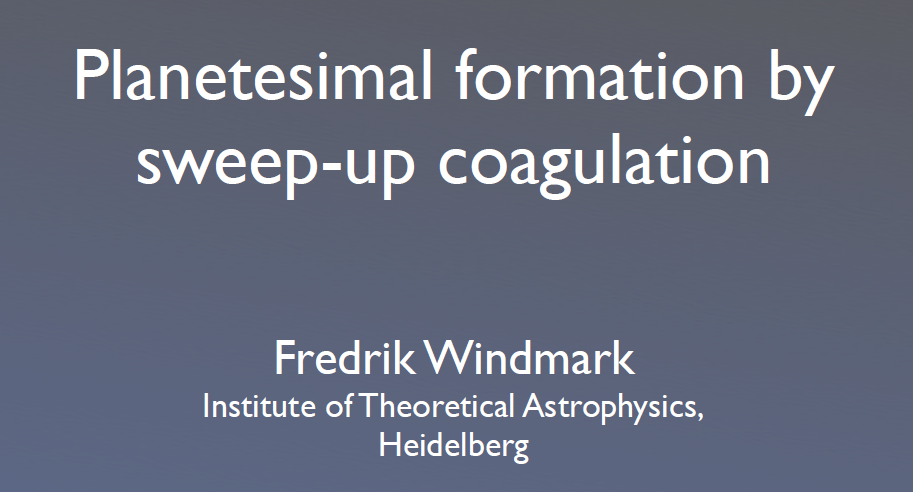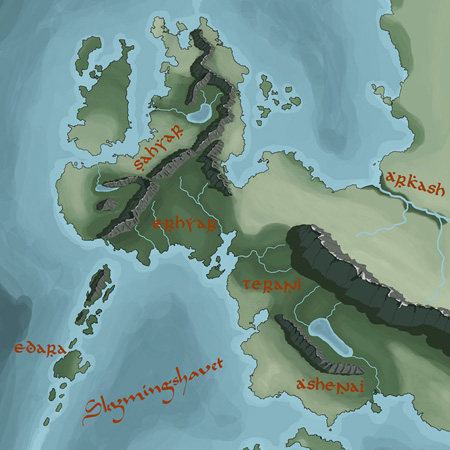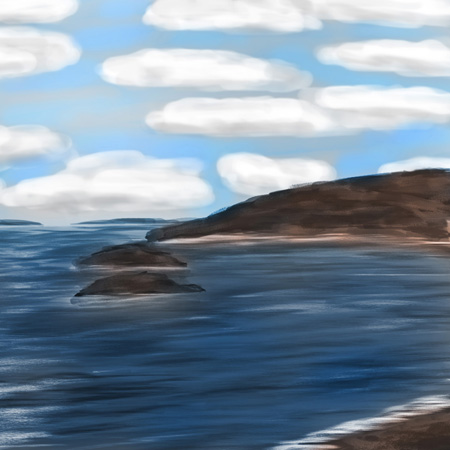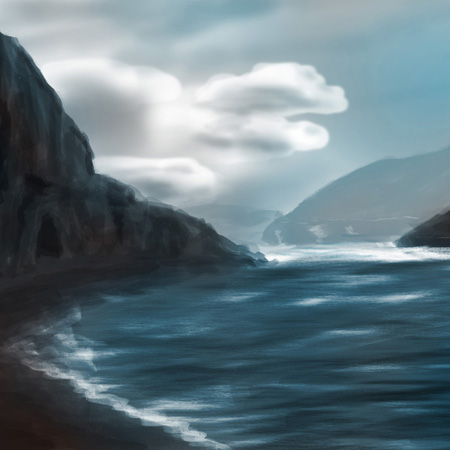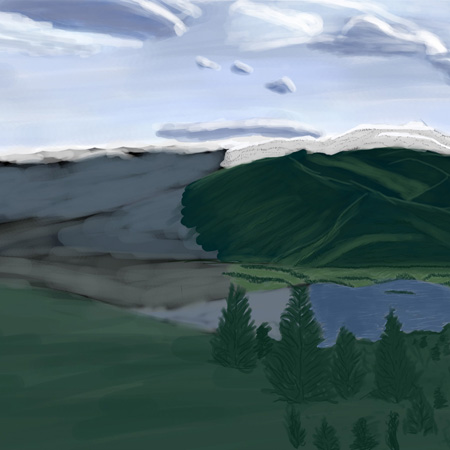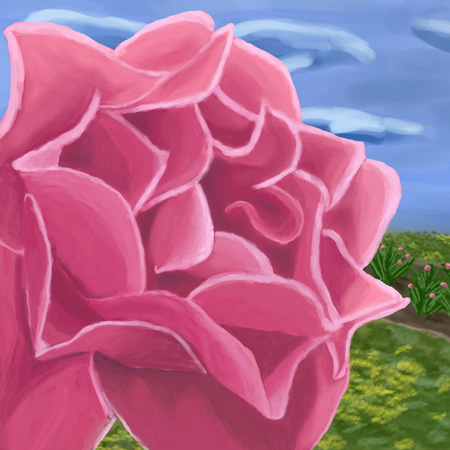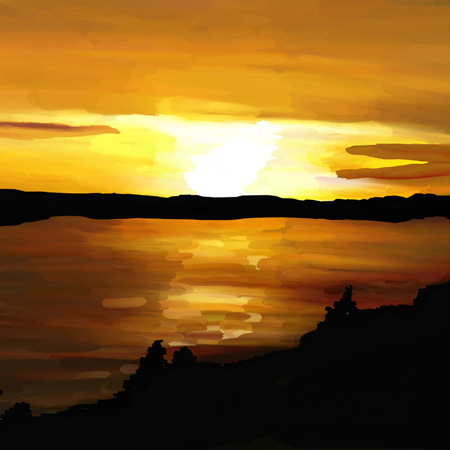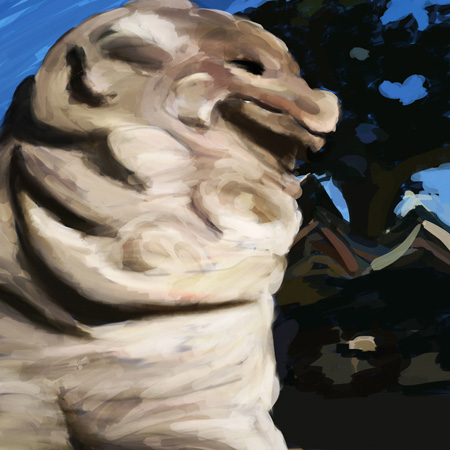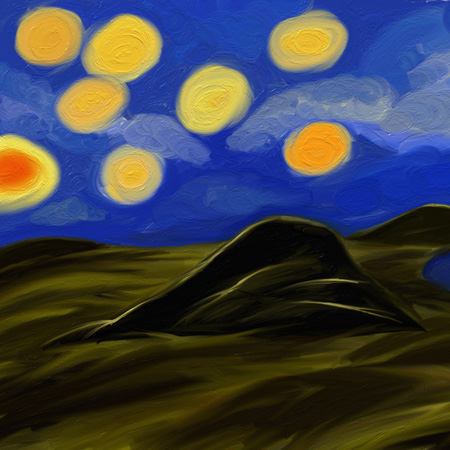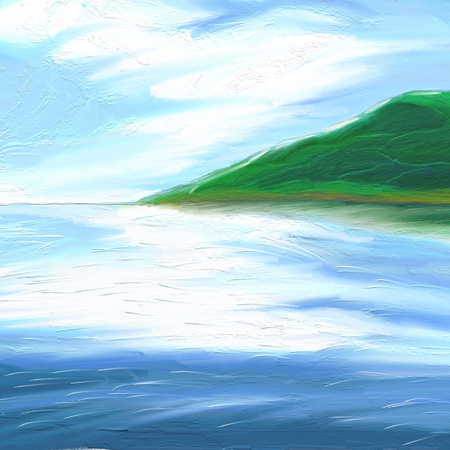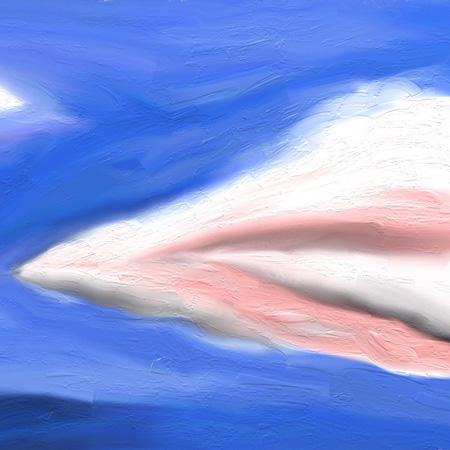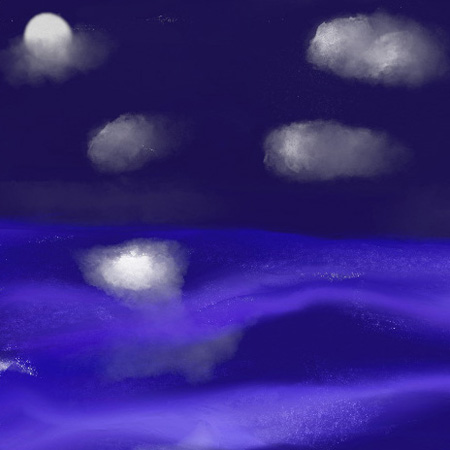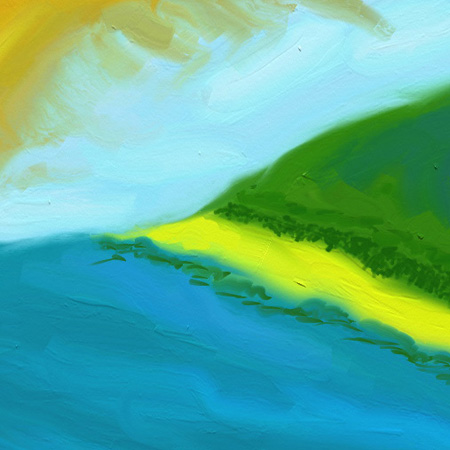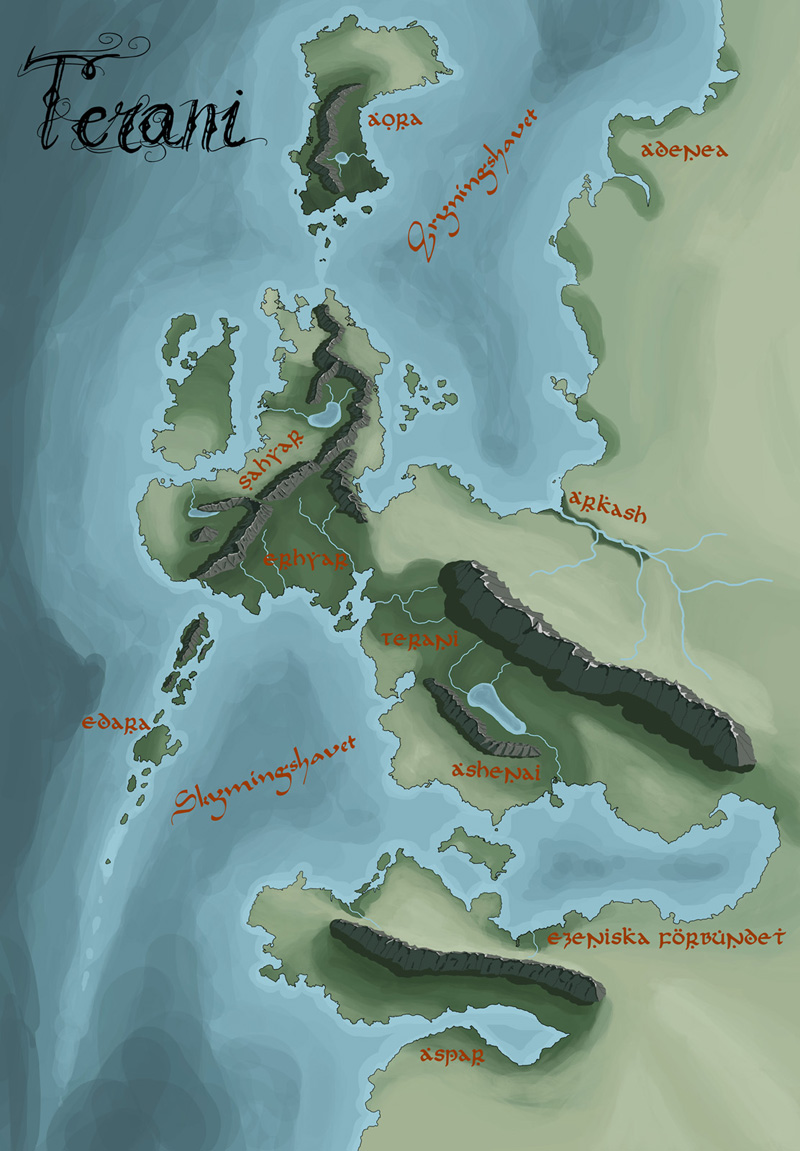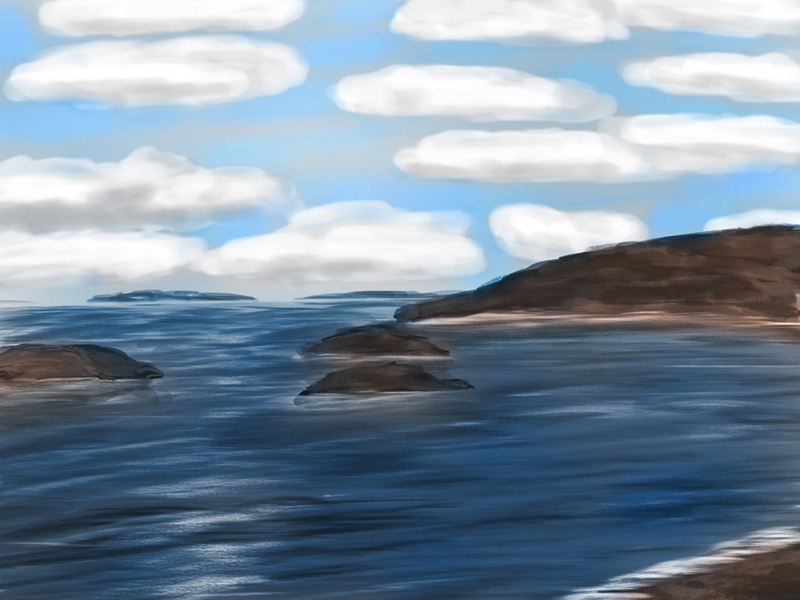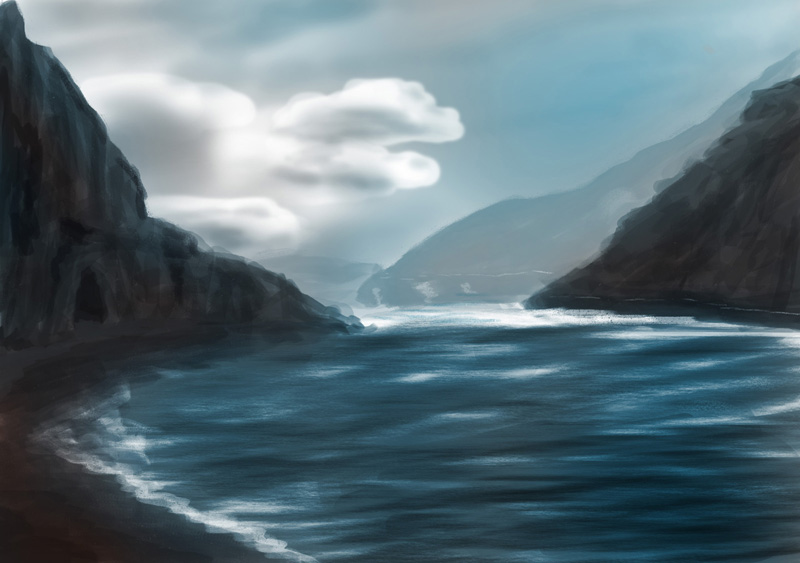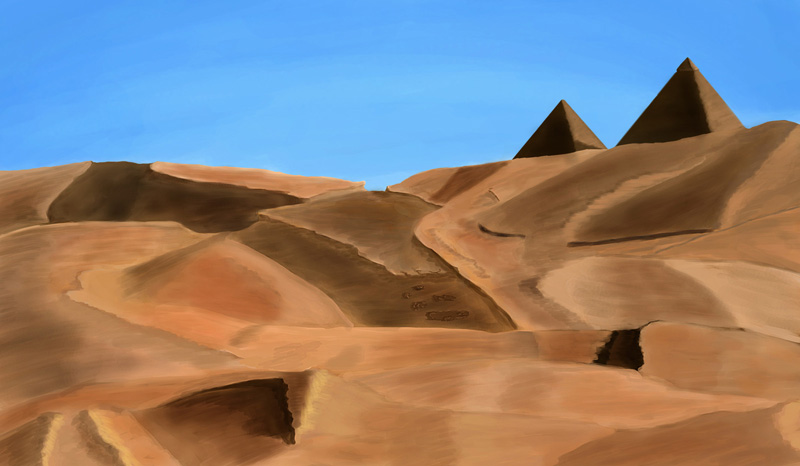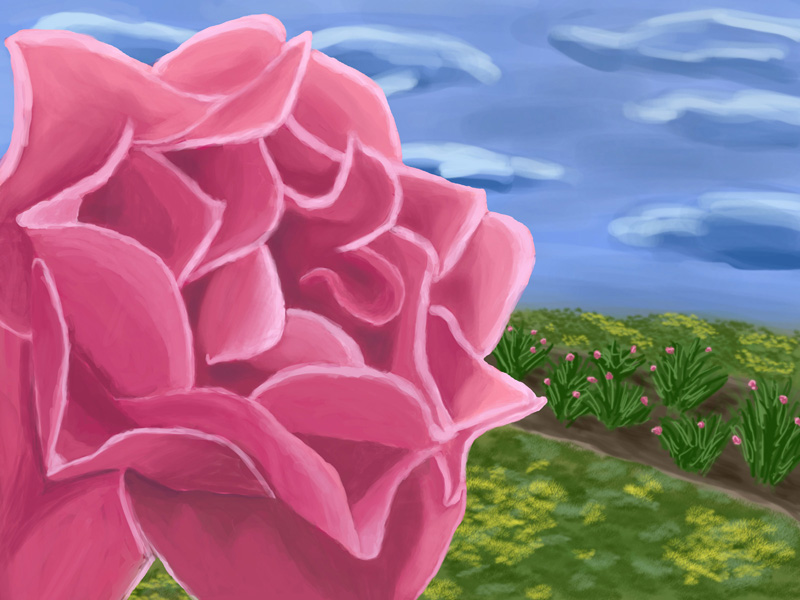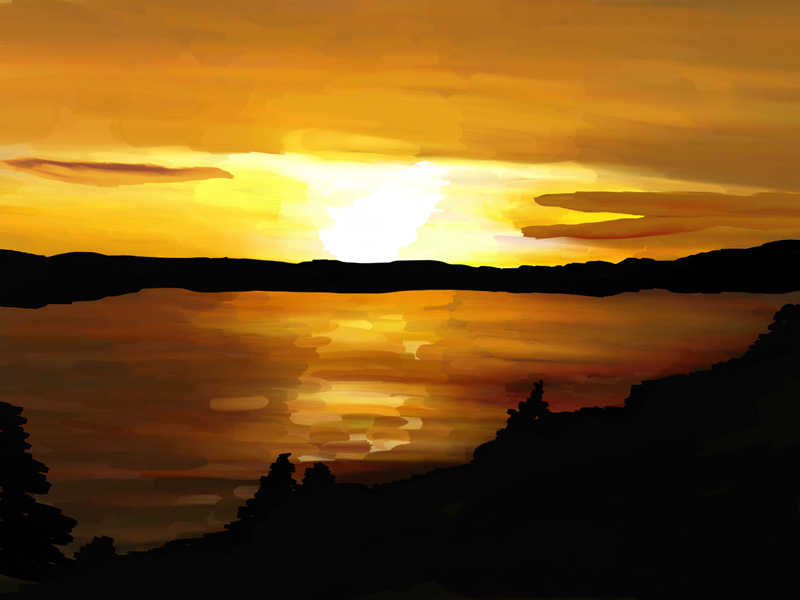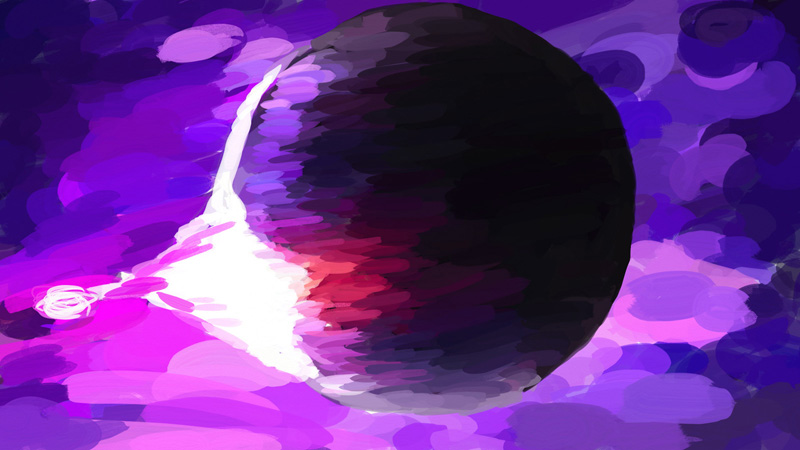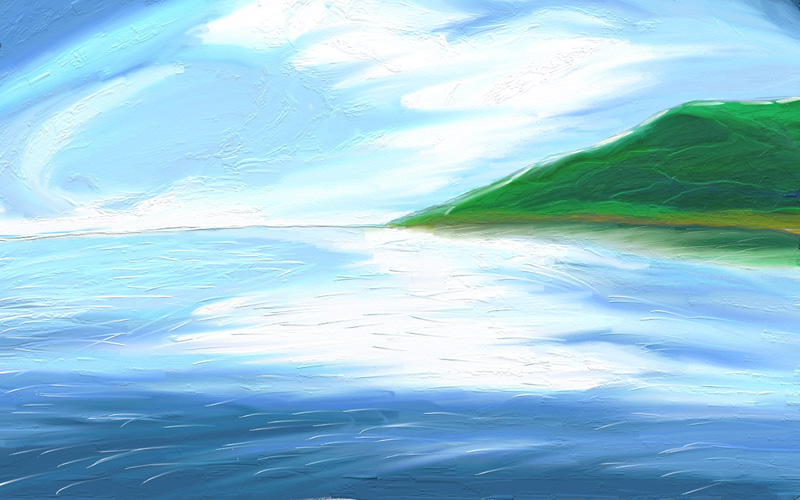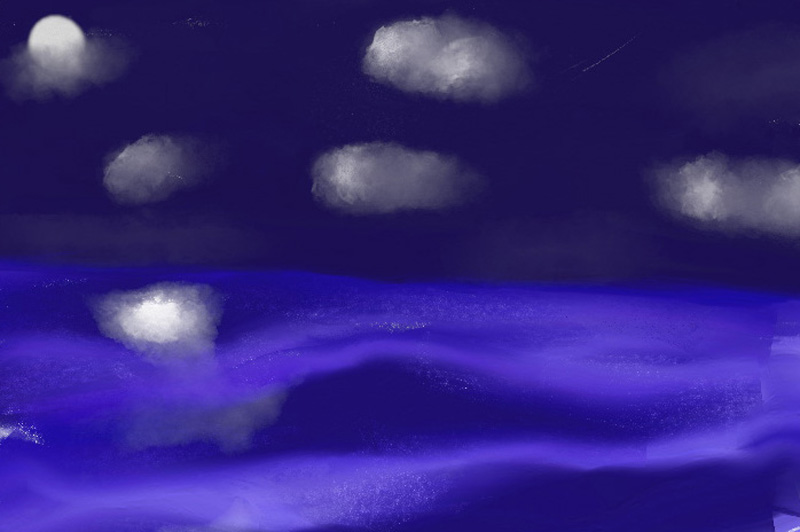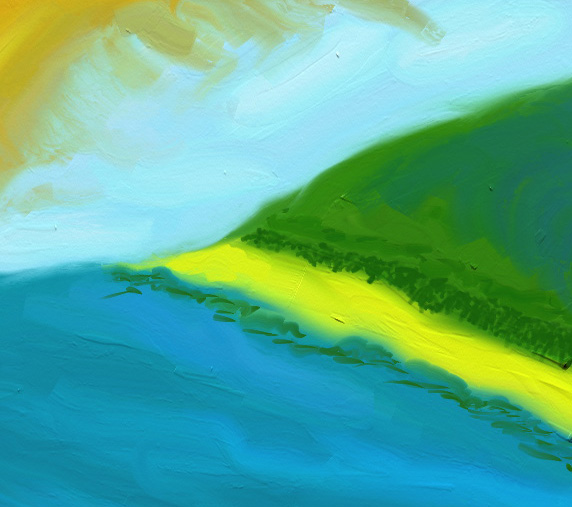Research
When the protostellar nebula collapses to form a star, we know that some of the gas and dust remains in the form of a disk, and we know that planets form in this disk sometime within ten million years. Exactly how this works, however, is still not fully understood, but coagulation of the dust is thought to be very important. One of the main problems with this picture, however, is that a number of barriers have been identified that prevent the dust from growing into large bodies. Sweep-up coagulation could be a solution.
Dust growth barriers
Small dust grains tend to stick together as they collide in the protoplanetary disk, forming larger and larger aggregates. If they reach planetesimal sizes (larger than 1 km), gravity can help to trigger so-called runaway-growth which finally results in a planet being formed. However, when a certain size is reached (1 mm - 1 m), the grains get so fragile and/or smash into each other at such high velocities that collisions instead result in bouncing or fragmentation, much below the kilometers needed to get our planets. At these intermediate sizes, the interaction with the gas also causes the dust to rapidly drift inwards towards the star and get lost. These are what we call the barriers to dust growth. Because there are so many dust particles in the disk (around 10^40), even the most advanced coagulation codes struggle to include the physical effects that might explain growth past these barriers.
Sweep-up coagulation
I wanted to examine some of the common simplifications usually made in dust evolution modeling. One of the things I did was to, in collaboration with the laboratory, develop a more realistic model for determining the outcome of a dust collision. What I found was a new way for dust grains to grow large, by what we call sweep-up coagulation. In this scenario, bouncing and fragmentation still keep most of the dust in the disk small, but a few grains are lucky enough to grow slightly larger than the others, enough to trigger sweep-up. This works thanks to mass transfer collisions, which is basically like tossing a bunch of snowballs onto a wall - the snowballs breaks, but the wall grows slightly bigger each time. In my PhD thesis, I described the process of sweep-up coagulation in detail, as well as the initial steps towards an inside-out formation model where we give a prediction of the size and spatial distribution of the first generation of planetesimals.
Writing
I was nine when I started reading on my own. First out was Tolkien's Lord of the Rings, and I got hooked for real when I found The Wheel of Time by Robert Jordan. Reading stories and creating my own has been my biggest interest since then. I recently finished my first novel, called The Night Girl (Nattflickan), which I will do my best to get published. In the meantime, I am keeping myself occupied with the writing of The Friends of the Ocean Lady (Havsfruns vänner).
The Night Girl
Thirteen year-old Anna does not see the world as others do. She is allergic to the sun, which has isolated her from friends and family. Instead, she is accompanied with her own fantasies; the Old Man who lives under her bed and the Hag who lurks out in the garden. They have taught her that she is special, and that even though she loves her family, she can never trust anyone if she wants to survive. The only time she can really relax is at night, when she runs through the woods together with the Black Stallion. In school, they whisper that Anna kills cats, abuses her sisters and worships demons, but not all of that is true. The real hell begins when she starts seventh grade and meets Tess and Gabriella. At the same time, someone starts vandalizing Viken, and Anna soon realizes that it is aimed towards her.
The Friends of the Ocean Lady
It is the summer of 1758, and the coast of Bohuslän is boiling. The herring has returned to the Swedish waters, and with it, the people. Linus and his family see their Moland exploding with strangers that have come to fish their fish and cut down their trees. Linus is fondly called the Herring Prince by the grownups, as his father claims Linus to be the offspring between himself and the Ocean Lady. Born on the spring when the first of the great herring schools arrived, not even the most superstitious can deny the blessing of the Ocean Lady. Not with herring practically jumping into the fishing boats on their own accord. When the summer sees another wave of newcomers arriving to his island, Linus sets out with his brother Simon and their friend Sissa to drive them away, in the name of the Ocean Lady.
